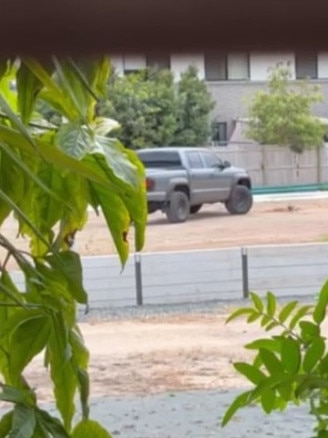Queensland man fined for driving into native birds nest
A man has been issued a hefty fine after he ran over a native bird’s nest, with the act filmed by a bystander.
On the Road
Don't miss out on the headlines from On the Road. Followed categories will be added to My News.
The moment a man drove over and crushed three plover chicks to death has been captured on video.
Footage shows the motorist in the grey ute driving over the nest before grinding its wheels tinto the dirt whil the parent birds watch on.
The video was recorded by a member of the public in November 2022 and sent to the RSPCA.
The man has now been fined $718 following a joint investigation from the Queensland Parks and Wildlife Service and the RSPCA.


Compliance officer Warren Christensen said the man claimed he wanted to remove the nest from the vacant lot for “development reasons”.
“As he is driving over the nest, the parents of the chicks were squawking and flapping their wings in a futile attempt to prevent it,” he said.
“The actions of the man are disturbing, and it is extremely cruel to target defenceless hatchlings, or chicks that were about to hatch.”


Under Queensland’s Nature Conservation Act 1992, the maximum court-imposed penalty for killing a protected animal is $14,375.
It is also against the law to tamper with a breeding place that is being used by a protected animal to incubate or raise offspring.
“People are reminded that birds will begin nesting as spring approaches, and plovers and other ground-dwelling birds will be setting up their nests,” said Mr Christensen.
“If wildlife are potentially causing harm by swooping, people should hire a licenced wildlife removal and relocation service and not take matters into their own hands.”
RSPCA spokesperson Emma Lagoon said the behaviour was “completely unacceptable”.
“While we are pleased that there has been a consequence to this callous behaviour, the community will not tolerate these acts of animal cruelty,” she said.
Masked lapwing plovers are common in large parts of eastern, northern and central Australia, and are identified by a large wattle covering their beak.
They also have a thorned yellow spur that projects from their wings.
Originally published as Queensland man fined for driving into native birds nest


